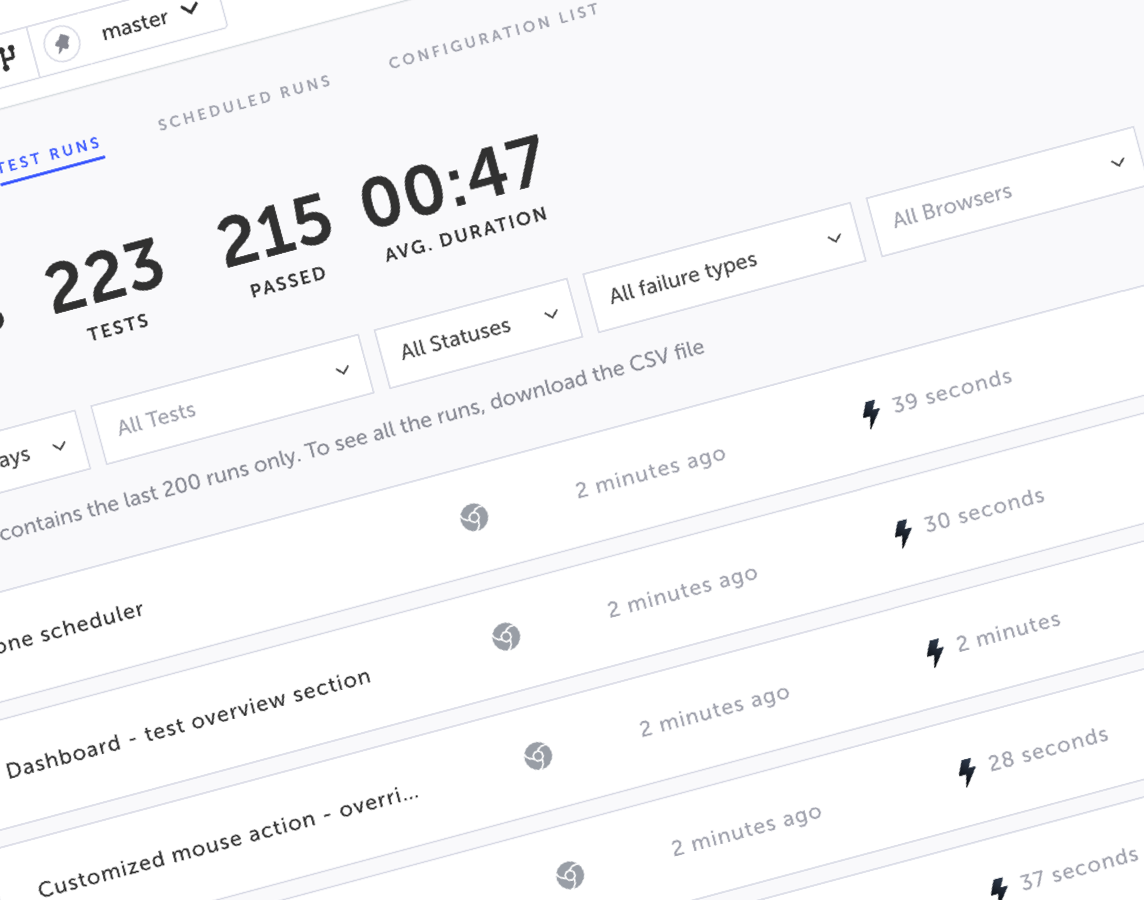Software developers need faster feedback to fix bugs when they are less expensive to correct. One strategy for providing earlier feedback is to shift testing earlier in the process (shift-left). Teams can detect and fix bugs with the least impact by running unit, integration, and E2E UI tests as early as possible.
There’s a second way to get quicker feedback—faster test execution.

These two strategies for gaining earlier feedback, shifting-left, and faster executions, are complementary, each adding to overall release speed and quality.
In this post, we will share how faster test executions can improve developer and QA productivity. We’ll also introduce a new feature from Testim that helps teams execute tests significantly faster.
The cost of slow
It might not seem like test execution speeds will have a significant impact on software quality. How will tests that run in seconds instead of minutes impact quality?
If a developer knows that an activity, such as test execution, will take more than a few minutes, they often switch to some other task. Then later, if they need to go back into the code to fix a bug, they will have to reorient themselves and incur a second switching penalty. This is called context switching, and according to psychologist Gerald Weinberg, author of Quality Software Management, each extra task you switch between eats up 20% of your overall productivity.
We can probably all relate to the context switching costs. If I’m writing a blog and need to run a spell check program that takes an hour, I’m likely going to move on to some other task. I’d prefer to handle my “bugs” while I’m in the flow of writing.
Fast execution helps the developer execute a quick sanity test and fix any issues while staying in context. This not only helps boost productivity but also helps improve quality.
Faster tests aren’t just for developers. QA professionals executing large suites might have to wait hours for them to complete. Speedier execution means they can get to troubleshooting and bug reporting immediately, again accelerating the feedback loop.
Testim’s Turbo mode (formerly high-speed)
Testim already has many features to help you accelerate your test runs faster, such as parallelization, the ability to run locally or on a grid, and an efficient smart locator method that takes less time to find elements. We’ve compared our tests against other low-code or codeless tools and consistently complete execution in less than half the time of alternatives.
We’re taking that up a notch!
With Turbo mode, tests execute between 25 and 30% faster than standard Testim tests, further increasing the gap with our competitors. The faster execution is perfect for developers who want to run a quick smoke test on a new code commit. It can also save time for a QA team running a full regression suite for a new feature.
Turbo mode is a simple configuration change when setting up an execution. The speed boost is gained by not saving test artifacts like screenshots or logs for successful test runs. Testim will continue to keep artifacts on failed runs.
Read more in the docs.
This feature is for professional plan customers. To try it out, community and essentials plan customers can request a trial by contacting their Testim sales representative.



